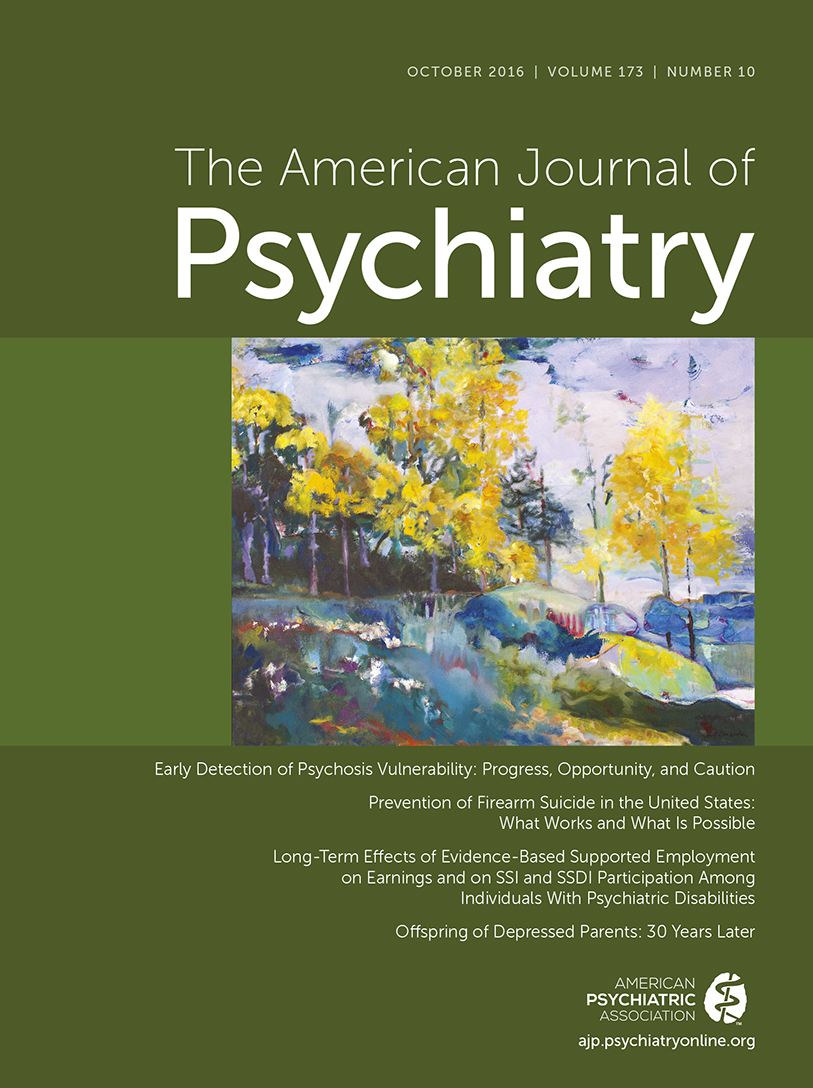Prevention of Firearm Suicide in the United States: What Works and What Is Possible
Abstract
Objective:
About 21,000 suicides in the United States in 2014 involved a firearm. The authors reviewed evidence from around the world regarding the relationship between firearm ownership rates and firearm suicide rates and the potential effectiveness of policy-based strategies for preventing firearm suicides in the United States.
Method:
Relevant publications were identified by searches of PubMed, PsycINFO, MEDLINE, and Google Scholar from 1980 to September 2015, using the search terms suicide AND firearms OR guns. Excluding duplicates, 1,687 results were found, 60 of which were selected for inclusion; these sources yielded an additional 10 studies, for a total of 70 studies.
Results:
Case-control and ecological studies investigating geographic and temporal variations in firearm ownership and firearm suicide rates indicate that greater firearm availability is associated with higher firearm suicide rates. Time-series analyses, mostly from other countries, show that legislation reducing firearm ownership lowers firearm suicide rates. Because the Second Amendment curtails legislation broadly restricting firearm access in the United States, the emphasis is shifted to restricting access for those at risk of harming themselves or others. Most suicides involve guns purchased years earlier. Targeted initiatives like gun violence restraining orders, smart gun technology, and gun safety education campaigns potentially reduce access to already purchased firearms by suicidal individuals. Such measures are too new to have evidence of effectiveness.
Conclusions:
Broadly reducing availability and access to firearms has lowered firearm suicide rates in other countries but does not appear feasible in the United States. Approaches restricting access of at-risk individuals to already purchased firearms by engaging the public and major stakeholders require urgent implementation and outcome evaluation for firearm suicide prevention.
Access content
To read the fulltext, please use one of the options below to sign in or purchase access.- Personal login
- Institutional Login
- Sign in via OpenAthens
- Register for access
-
Please login/register if you wish to pair your device and check access availability.
Not a subscriber?
PsychiatryOnline subscription options offer access to the DSM-5 library, books, journals, CME, and patient resources. This all-in-one virtual library provides psychiatrists and mental health professionals with key resources for diagnosis, treatment, research, and professional development.
Need more help? PsychiatryOnline Customer Service may be reached by emailing [email protected] or by calling 800-368-5777 (in the U.S.) or 703-907-7322 (outside the U.S.).



